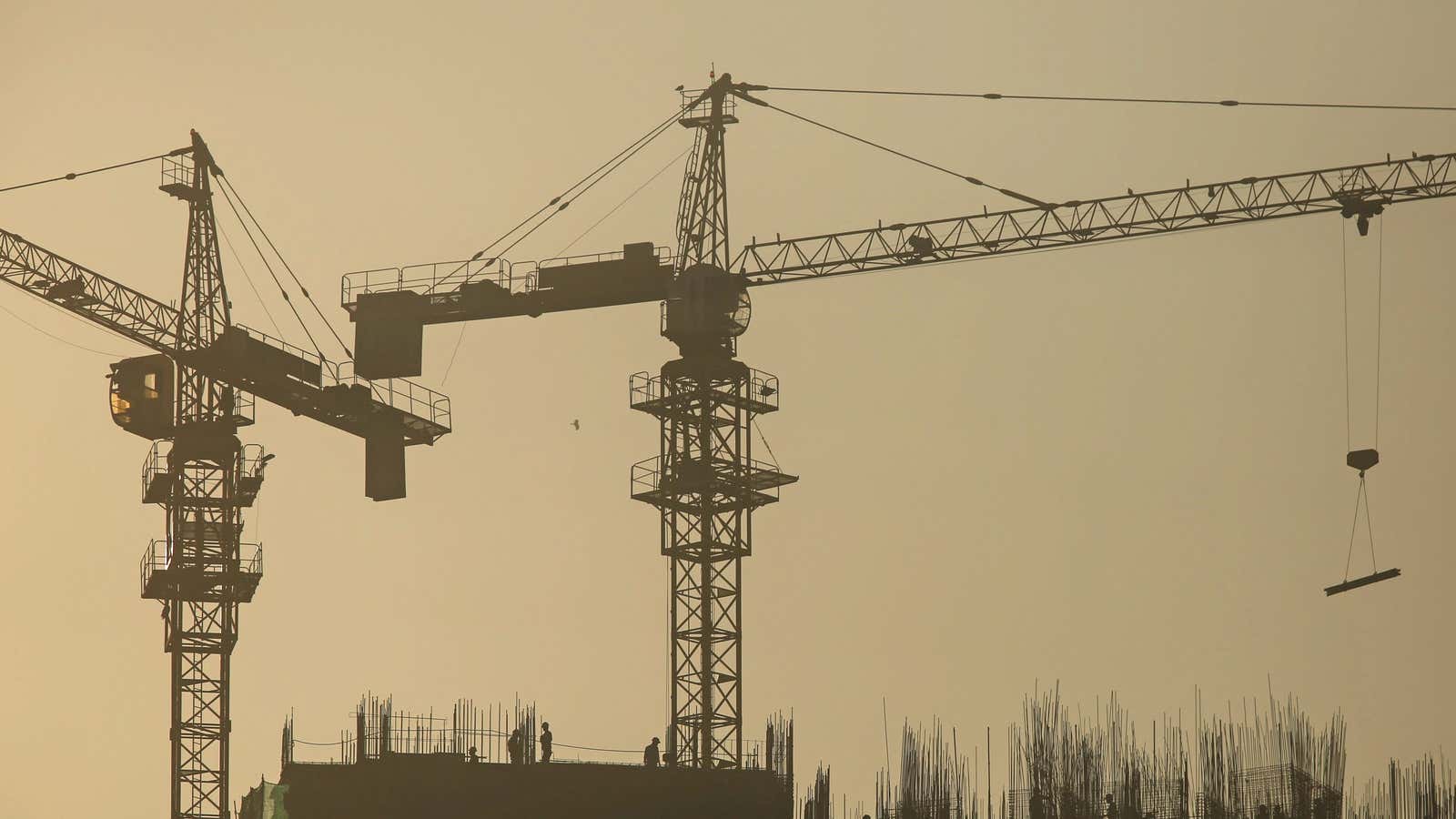Covid-19-induced lockdowns were expected to take a toll on India’s economy, like anywhere else. But the first-quarter GDP numbers paint a much grimmer picture than expected.
After the government’s data showed that India’s economy contracted by a record 23.9% in the June quarter, former central bank governor Raghuram Rajan set the alarm bells ringing. Comparing India to two other major virus-hit countries like Italy and the US, Rajan warned that India’s “numbers will probably be worse when we get estimates of the damage in the informal sector.”
Rajan isn’t the only one who has grave concerns about India’s economic decline. Rating agencies made sharp downward revisions to their GDP estimates for the current financial year, signaling that a much more severe economic slowdown lies ahead for India. Of these, Goldman Sachs has the most pessimistic prediction: a “deeper recession.”
The economy will struggle to revive
The reason for such pessimism around India’s economy—which was once one of the fastest growing in the world—is a slow and painful recovery process. “After the nationwide lockdown ended, economic indicators obviously improved but the concern now is when we will reach pre-Covid levels,” said Sreejith Balasubramanian, economist at Mumbai-based asset management firm IDFC AMC.
While the nationwide lockdown has been removed, local level restrictions, which are in place due to the rise in Covid-19 cases, continue to hamper economic activity. “One factor holding back private economic activity is the continued escalation of Covid-19,” said Vishrut Rana, Asia-Pacific economist for S&P Global Ratings.
Adding to India’s economic woes, the government has little fiscal space to provide a booster shot to the economy. The fiscal deficit target (the difference between revenue and expenditure) for the current financial year has already been breached.
Whether Google mobility or tax collection data, most of the high-frequency economic indicators point to a plateauing of revival. For instance, Goldman Sachs predicts a contraction of 13.7% and 9.8% year-on-year in the September and December quarters respectively.
Such a deep recession will make climbing out of the hole difficult. “De-growth (the first quarter of the financial year 2020) was likely the nadir of the cycle, but a sharper rebound has been hamstrung by varying extent of easing in restrictions across districts as the pandemic evolves and broadens its reach,” writes Radhika Rao, economist at DBS Group Research in a recent investor note.
India faces structural economic problems
Now the damage left behind by coronavirus-led slowdown could snowball into a bigger economic crisis. India could be staring at a structural slowdown rather than a cyclical one. “If you don’t have growth, then it’s a big problem,” Balasubramanian says. “Businesses defer investments (or could even close down in the current situation) as they don’t see demand, which leads to unemployment and wage issues. Households wait for clarity on jobs and wages to base their consumption decisions.”
The chorus for a stimulus has reached a crescendo. Calling the Indian economy a “patient,” Rajan urged the government to provide the “tonic” of stimulus. He warned that government officials are “underestimating” the ripple effects and damage of the current economic decline. “Instead of claiming there is a V-shaped recovery round the corner, they should wonder why the United States, despite spending over 20% of GDP in fiscal and credit relief measures, is still worried the economy will not return to pre-pandemic GDP levels by the end of 2021.”
